Characteristic and functional analysis of a newly established porcine small intestinal epithelial cell line
- PMID: 25337908
- PMCID: PMC4206455
- DOI: 10.1371/journal.pone.0110916
Characteristic and functional analysis of a newly established porcine small intestinal epithelial cell line
Abstract
The mucosal surface of intestine is continuously exposed to both potential pathogens and beneficial commensal microorganisms. Recent findings suggest that intestinal epithelial cells, which once considered as a simple physical barrier, are a crucial cell lineage necessary for maintaining intestinal immune homeostasis. Therefore, establishing a stable and reliable intestinal epithelial cell line for future research on the mucosal immune system is necessary. In the present study, we established a porcine intestinal epithelial cell line (ZYM-SIEC02) by introducing the human telomerase reverse transcriptase (hTERT) gene into small intestinal epithelial cells derived from a neonatal, unsuckled piglet. Morphological analysis revealed a homogeneous cobblestone-like morphology of the epithelial cell sheets. Ultrastructural indicated the presence of microvilli, tight junctions, and a glandular configuration typical of the small intestine. Furthermore, ZYM-SIEC02 cells expressed epithelial cell-specific markers including cytokeratin 18, pan-cytokeratin, sucrase-isomaltase, E-cadherin and ZO-1. Immortalized ZYM-SIEC02 cells remained diploid and were not transformed. In addition, we also examined the host cell response to Salmonella and LPS and verified the enhanced expression of mRNAs encoding IL-8 and TNF-α by infection with Salmonella enterica serovars Typhimurium (S. Typhimurium). Results showed that IL-8 protein expression were upregulated following Salmonella invasion. TLR4, TLR6 and IL-6 mRNA expression were upregulated following stimulation with LPS, ZYM-SIEC02 cells were hyporeponsive to LPS with respect to IL-8 mRNA expression and secretion. TNFα mRNA levels were significantly decreased after LPS stimulation and TNF-α secretion were not detected challenged with S. Typhimurium neither nor LPS. Taken together, these findings demonstrate that ZYM-SIEC02 cells retained the morphological and functional characteristics typical of primary swine intestinal epithelial cells and thus provide a relevant in vitro model system for future studies on porcine small intestinal pathogen-host cell interactions.
Conflict of interest statement
Figures
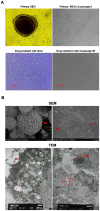
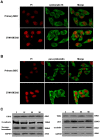

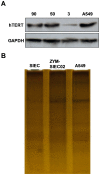
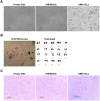



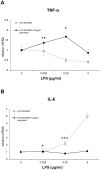
Similar articles
-
Lipopolysaccharide Upregulated Intestinal Epithelial Cell Expression of Fn14 and Activation of Fn14 Signaling Amplify Intestinal TLR4-Mediated Inflammation.Front Cell Infect Microbiol. 2017 Jul 11;7:315. doi: 10.3389/fcimb.2017.00315. eCollection 2017. Front Cell Infect Microbiol. 2017. PMID: 28744451 Free PMC article.
-
Establishment and characterization of an immortalized bovine intestinal epithelial cell line.J Anim Sci. 2023 Jan 3;101:skad215. doi: 10.1093/jas/skad215. J Anim Sci. 2023. PMID: 37351870 Free PMC article.
-
Glucagon-like peptide 2 attenuates intestinal mucosal barrier injury through the MLCK/pMLC signaling pathway in a piglet model.J Cell Physiol. 2021 Apr;236(4):3015-3032. doi: 10.1002/jcp.30068. Epub 2020 Sep 22. J Cell Physiol. 2021. PMID: 32960454
-
Porcine IPEC-J2 intestinal epithelial cells in microbiological investigations.Vet Microbiol. 2012 May 4;156(3-4):229-37. doi: 10.1016/j.vetmic.2011.10.017. Epub 2011 Oct 20. Vet Microbiol. 2012. PMID: 22074860 Free PMC article. Review.
-
Development, validation and implementation of an in vitro model for the study of metabolic and immune function in normal and inflamed human colonic epithelium.Dan Med J. 2015 Jan;62(1):B4973. Dan Med J. 2015. PMID: 25557335 Review.
Cited by
-
Lipopolysaccharide Upregulated Intestinal Epithelial Cell Expression of Fn14 and Activation of Fn14 Signaling Amplify Intestinal TLR4-Mediated Inflammation.Front Cell Infect Microbiol. 2017 Jul 11;7:315. doi: 10.3389/fcimb.2017.00315. eCollection 2017. Front Cell Infect Microbiol. 2017. PMID: 28744451 Free PMC article.
-
Establishment of SV40 Large T-Antigen-Immortalized Yak Rumen Fibroblast Cell Line and the Fibroblast Responses to Lipopolysaccharide.Toxins (Basel). 2023 Aug 31;15(9):537. doi: 10.3390/toxins15090537. Toxins (Basel). 2023. PMID: 37755963 Free PMC article.
-
TMPRSS2 and MSPL Facilitate Trypsin-Independent Porcine Epidemic Diarrhea Virus Replication in Vero Cells.Viruses. 2017 May 18;9(5):114. doi: 10.3390/v9050114. Viruses. 2017. PMID: 28524070 Free PMC article.
-
Establishment and evaluation of the goose embryo epithelial (GEE) cell line as a new model for propagation of avian viruses.PLoS One. 2018 Mar 1;13(3):e0193876. doi: 10.1371/journal.pone.0193876. eCollection 2018. PLoS One. 2018. Retraction in: PLoS One. 2024 Jun 13;19(6):e0305783. doi: 10.1371/journal.pone.0305783. PMID: 29494688 Free PMC article. Retracted.
-
Establishment and characterization of an immortalized bovine intestinal epithelial cell line.J Anim Sci. 2023 Jan 3;101:skad215. doi: 10.1093/jas/skad215. J Anim Sci. 2023. PMID: 37351870 Free PMC article.
References
-
- Burch DG (1982) Tiamulin feed premix in the prevention and control of swine dysentery under farm conditions in the UK. Vet Rec 110: 244–246. - PubMed
-
- Schierack P, Nordhoff M, Pollmann M, Weyrauch KD, Amasheh S, et al. (2006) Characterization of a porcine intestinal epithelial cell line for in vitro studies of microbial pathogenesis in swine. Histochem Cell Biol 125: 293–305. - PubMed
-
- Gibson-D'Ambrosio RE, Samuel M, D'Ambrosio SM (1986) A method for isolating large numbers of viable disaggregated cells from various human tissues for cell culture establishment. In Vitro Cell Dev Biol 22: 529–534. - PubMed
-
- Panja A (2000) A novel method for the establishment of a pure population of nontransformed human intestinal primary epithelial cell (HIPEC) lines in long term culture. Lab Invest 80: 1473–1475. - PubMed
Publication types
MeSH terms
Substances
LinkOut - more resources
Full Text Sources
Other Literature Sources

